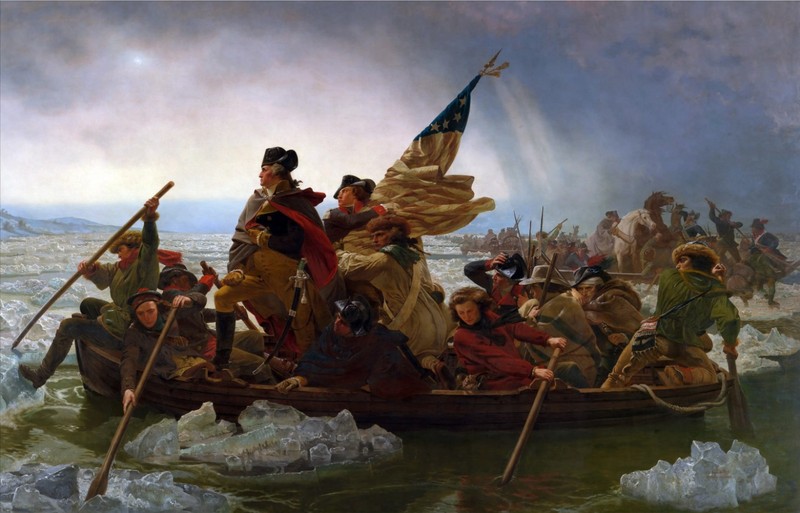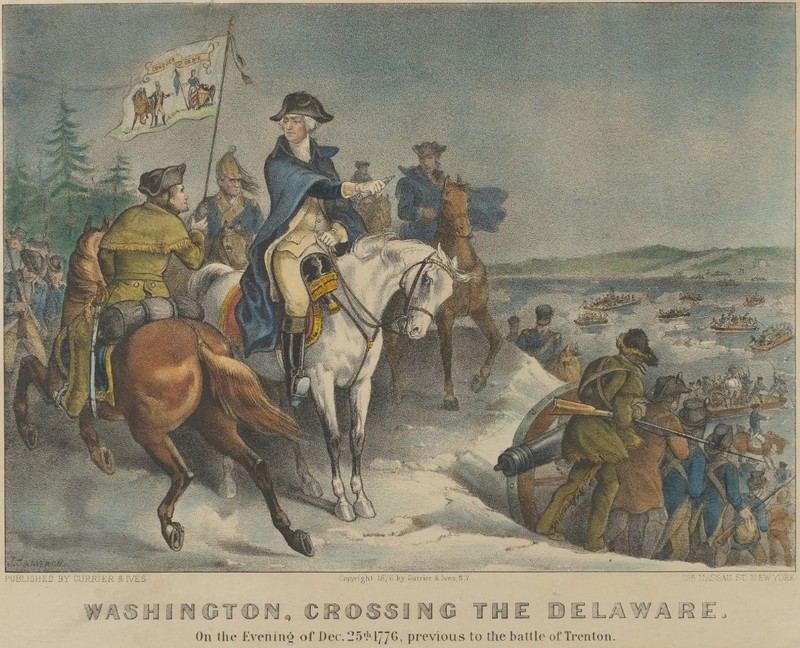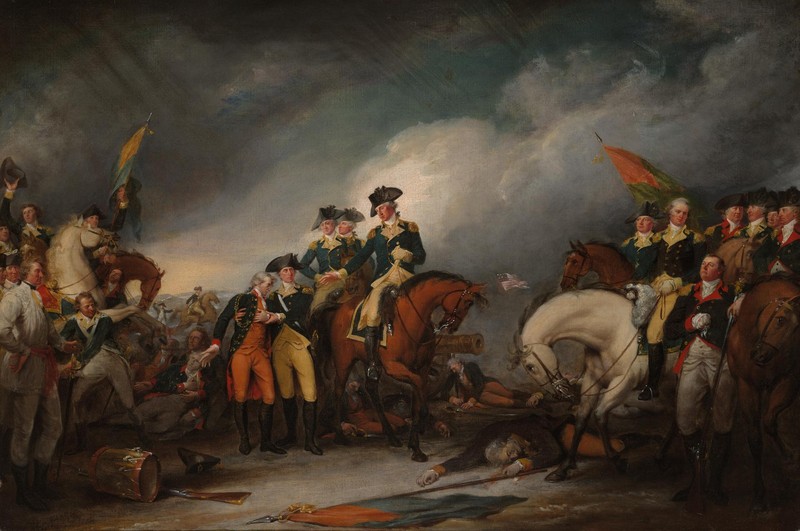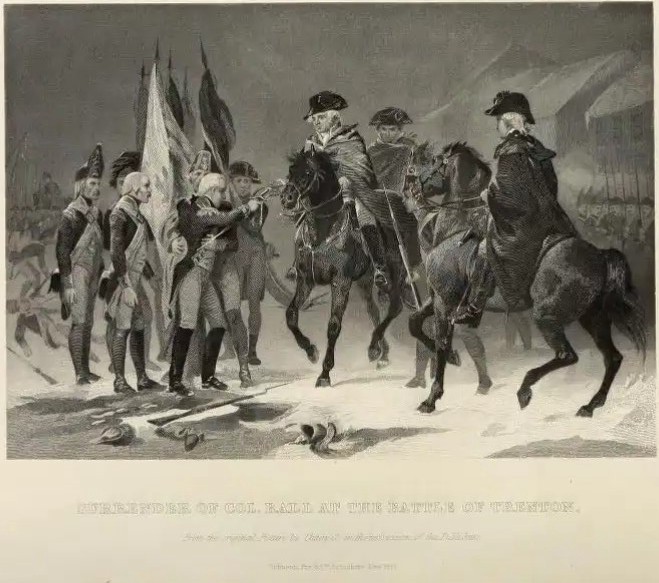Battle of Trenton
Introduction
Text-to-speech Audio
26 December 1776
Continental Victory
After the retreat from New York, General George Washington and his Continental Army fell back from New Jersey into Pennsylvania. Casualties, disease, desertion, and expiring enlistments brought his strength to only about 3,000 men. With the cause of independence at an all-time low, Washington resolved on one bold stroke. American troops crossed the dangerous, ice-choked Delaware River on Christmas night. The Army then marched nine miles south to strike at Hessian-held Trenton, New Jersey, taking them by surprise. In heavy street fighting, Continentals outmaneuvered the Hessians. They swept up nearly 900 prisoners as they captured Trenton. This shocking victory ignited the spirit of the Continental Army and the nascent nation.
Images
Washington Crossing the Delaware by Emanuel Leutze, 1851

"Washington, Crossing the Delaware—On the Evening of Dec. 25th 1776, previous to the battle of Trenton" by John Cameron, 1876

"The Capture of the Hessians at Trenton, December 26, 1776" by John Trumbull

"Surrender of Col. Rall at the Battle of Trenton."

Backstory and Context
Author-Uploaded Audio
Listen to a narration of this entry's description by Kenna Felix.
Text-to-speech Audio
After the Battle of Trenton, Washington expected a strong British counterattack. He established a solid defensive position south of Assunpink Creek as British Lt. Gen. Charles Cornwallis led about 5,000 Crown troops south toward Trenton. American skirmishers slowed the enemy advance. When Cornwallis arrived at Trenton, he launched three attacks but they failed to break the strong American defensive works each time. Late on the evening of 2 January Cornwallis held a council of war to determine if he should continue the attack that evening or give his men rest and resume the offensive in the morning. Cornwallis said that he had the “old fox,” referring to Washington, bagged and that they would collect him in the morning. A few British commanders disagreed and suggested that Washington would be gone by then. They were correct. By the morning, Washington and his Army had slipped away and were marching on Princeton, frustrating Cornwallis.
Sources
Boatner, Mark Mayo, Encyclopedia of the American Revolution, Stackpole Books, 1994.
Ferling, John, Almost a Miracle: The American Victory in the War of Independence, Oxford University Press, 2007.
Ferling, John, Whirlwind: The American Revolution and the War the Won It, Bloomsbury Publishing, 2015.
McCullough, David, 1776, Simon & Schuster, 2005.
Middlekauff, Robert, The Glorious Cause: The American Revolution, 1763-1789. Oxford University Press, 2005.
Philbrick, Nathaniel, Valiant Ambition: George Washington, Benedict Arnold, and the Fate of the American Revolution, Penguin Books, 2017.
Savas, Theodore P. & J. David. A Guide to the Battles of the American Revolution, New York: Savas Beatie LLC, 2006.
Stewart, Richard W., ed. American Military History. 2nd ed. Vol. 1. American Historical Series. Washington, D.C.: Center of Military History, United States Army, 2009.
Tucker, Spencer, ed. American Revolution: The Definitive Encyclopedia and the Document Collection (5 volumes), ABC-CLIO Publishing, 2018.
Metropolitan Museum of Art
Metropolitan Museum of Art
Yale University Art Gallery
Dawson, Henry B. Battles of the United States, by sea and land, vol. 1, 1858. Johnson, Fry and Company. Page 200-201.
